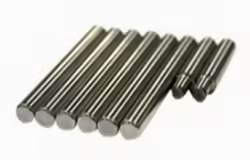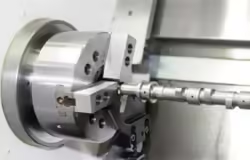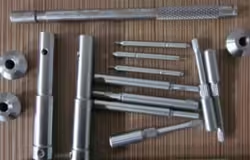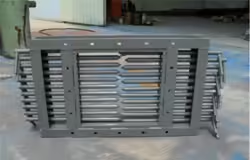
Understanding What is Billet Steel and Its Industrial Uses
Table of Contents
Introduction
In the realm of steel production, billet steel plays a crucial role in shaping various industrial applications. Whether you are in construction, manufacturing, or metalworking, understanding what is billet steel is essential to grasp the core of steel production processes and its various uses. Billet steel, often referred to as the raw material in steel manufacturing, is the foundation from which more refined products are made. In this blog, we will explore what is billet steel, its properties, manufacturing processes, and its broad range of industrial uses.
What is Billet Steel?

Billet steel is a semi-finished product that is formed by casting or continuous casting steel into long, square-shaped bars or rods. It serves as an intermediate product in the steelmaking process before being further processed into more specific shapes and sizes, such as bars, rods, or plates. The importance of billet steel lies in its versatility, as it can be rolled or forged into a wide range of steel products used in various industries.
Billet steel typically has a square cross-section and is produced either in smaller, specialized mills or larger industrial plants. Its malleable nature makes it suitable for further shaping and manufacturing, offering manufacturers the flexibility to produce different products from a single raw material.
The Manufacturing Process of Billet Steel
To truly understand what is billet steel, it is vital to delve into the manufacturing process that transforms raw materials into semi-finished billet forms. The process of billet steel production includes the following stages:
Melting and Casting
Steel billets are created through either melting scrap steel or raw iron ore in a furnace. The molten steel is then poured into molds or passed through a continuous casting machine. During this phase, steel undergoes cooling and solidification to form long, square-sectioned billets.
Rolling
The billets are then passed through rolling mills, where they are shaped into the desired dimensions. This rolling process enhances the strength and ductility of the steel, making it suitable for further manufacturing processes.
Inspection and Quality Control
Once the billets are formed, they undergo strict quality control inspections. Defects such as cracks, voids, or inconsistencies in the billet structure can impact the quality of the final steel products. Hence, billet steel goes through thorough testing to ensure that it meets industry standards.
Properties of Billet Steel
Now that we understand what is billet steel and how it is produced, let’s take a closer look at its properties. Billet steel possesses several characteristics that make it ideal for a variety of industrial applications:
Malleability
Billet steel is highly malleable, meaning it can be easily shaped into various forms, such as bars, rods, and sheets, without breaking or losing its structural integrity.
Durability
The inherent strength of billet steel makes it highly durable. This durability is essential for applications in construction, automotive, and other heavy industries where high-strength materials are required.
Heat Resistance
Due to its composition, billet steel exhibits excellent heat resistance. This makes it suitable for applications that involve exposure to high temperatures, such as furnace components and engine parts.
Cost-Effectiveness
One of the key advantages of billet steel is its cost-effectiveness. Its production process allows for mass manufacturing, which reduces the cost of raw materials and makes it accessible for large-scale industrial projects.
Industrial Uses of Billet Steel
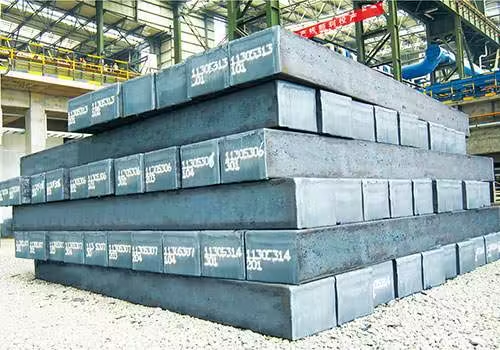
The versatility of billet steel means it has a wide range of applications across different industries. Understanding what is billet steel and its industrial uses helps explain why it is a preferred choice in sectors such as construction, automotive, and manufacturing. Here are some of the most common industrial uses of billet steel:
Construction Industry
In the construction industry, billet steel is used to produce structural steel components like beams, columns, and reinforcement bars. These elements are crucial for constructing buildings, bridges, and other infrastructure projects. Billet steel’s durability and resistance to environmental factors make it an ideal material for construction applications.
Automotive Industry
Billet steel is commonly used in the automotive industry to manufacture various parts, including axles, gears, and engine components. Its strength, heat resistance, and ability to withstand mechanical stress make it an essential material for producing high-performance automotive parts.
Manufacturing and Tooling
Billet steel is frequently used in the production of tools and machinery. Its malleability allows for the creation of precision tools, such as cutting blades and machine parts, that require high levels of accuracy and durability.
Shipbuilding
The shipbuilding industry relies heavily on billet steel for the production of ship hulls, decks, and engine parts. The corrosion resistance of billet steel ensures that these components can withstand harsh marine environments.
Aerospace Industry
In the aerospace sector, billet steel is used for manufacturing aircraft components, such as landing gear and engine parts. The high strength-to-weight ratio of billet steel makes it ideal for applications where both durability and weight reduction are critical.
Table of Common Industrial Applications of Billet Steel
The following table provides an overview of some common industrial applications of billet steel and their corresponding benefits:
| Industry | Application | Benefits |
|---|---|---|
| Construction | Structural beams, rebar | High strength, durability, cost-effective |
| Automotive | Engine components, axles | Heat resistance, mechanical strength |
| Manufacturing | Precision tools, machinery | Malleability, durability |
| Shipbuilding | Hulls, decks, engine parts | Corrosion resistance, toughness |
| Aerospace | Landing gear, engine parts | High strength-to-weight ratio, heat resistance |
How to Choose the Right Billet Steel for Your Project
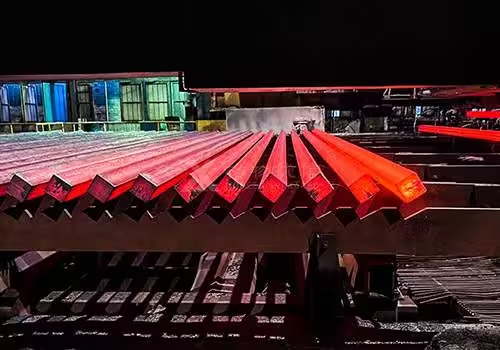
When selecting billet steel for your project, there are several factors to consider, including the specific requirements of the application, the environment in which the steel will be used, and the mechanical properties needed. Here are some tips to help you choose the right billet steel:
Consider the Strength Requirements
Depending on your project, you may need billet steel with specific strength characteristics. For instance, if the project involves heavy loads or high mechanical stress, choosing a higher-grade billet steel with enhanced strength properties is essential.
Analyze the Working Environment
The environment in which the billet steel will be used plays a key role in material selection. For projects exposed to corrosive environments, such as marine applications, it is important to choose a billet steel that offers superior corrosion resistance.
Evaluate the Cost
While billet steel is generally cost-effective, certain grades may be more expensive due to additional processing or enhanced properties. Balancing the cost of the material with the requirements of your project is crucial to ensure that you are getting the best value for your investment.
Conclusion
In summary, understanding what is billet steel and its industrial uses is key to selecting the right material for your projects. Billet steel, with its malleability, durability, and heat resistance, serves as a foundational element in numerous industries, including construction, automotive, aerospace, and manufacturing. Its versatility, combined with its cost-effectiveness, ensures that billet steel remains an essential material in the production of high-performance components and structures.
FAQ
What is billet steel?
Billet steel is a semi-finished product that is formed by casting steel into long bars or rods. It is typically square or rectangular in shape and serves as the raw material for manufacturing various steel products like rods, bars, and structural components.
How is billet steel made?
To understand what is billet steel, it’s essential to know it is produced by melting scrap steel or iron ore in a furnace, followed by casting into molds or continuous casting. The resulting steel billets are then processed further through rolling or forging.
What is billet steel used for?
Billet steel is used in a wide range of industries, including construction, automotive, aerospace, and manufacturing. It is often transformed into final products such as beams, rebar, engine parts, and tools.
What is billet steel’s role in construction?
In construction, billet steel is used to create structural components like beams, columns, and reinforcement bars. Its strength and durability make it ideal for withstanding heavy loads in buildings and bridges.
Why is billet steel important in manufacturing?
What is billet steel’s significance in manufacturing? It serves as a versatile raw material, making it essential for producing precision tools, machinery parts, and other components that require durability and malleability.
What is billet steel’s advantage over other forms of steel?
Billet steel offers advantages such as high strength, durability, and cost-effectiveness. It is easier to shape and refine into various finished products, making it a preferred choice for many industries.
How does the composition of billet steel affect its properties?
What is billet steel’s composition? It typically contains iron, carbon, and other alloying elements like manganese or silicon, which enhance its mechanical properties, such as strength and heat resistance.
What is billet steel’s environmental impact?
Billet steel can be made from recycled steel, reducing the need for raw iron ore and lowering carbon emissions. This makes it an environmentally friendly option in steel production.
What is billet steel’s durability like in harsh environments?
Billet steel is highly durable, especially when alloyed for specific conditions, such as corrosion resistance or heat tolerance. This makes it suitable for applications in extreme environments like shipbuilding and aerospace.
What is billet steel’s role in the automotive industry?
In the automotive sector, billet steel is used to create engine parts, axles, and gears. Its mechanical strength and resistance to wear make it ideal for components that must endure constant stress.

